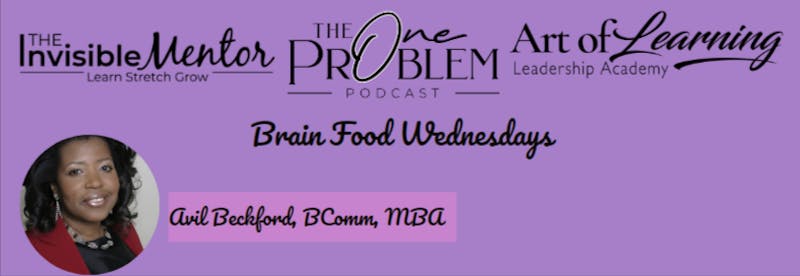Your cart is currently empty!
Brain Food Wednesdays How to Remember More of What You Read: 6 Strategies for Active Reading

Dear Reader,
In this week’s newsletter, the 164th issue of Brain Food Wednesdays, the topic is how to remember more of what you read. This is a question I’m frequently asked, so I thought I’d provide an answer in the newsletter. I hope you find the information useful.
Ask Avil
Introduction
As a busy professional, you’re constantly bombarded with information from all directions. Whether it’s work-related reports, industry publications, or personal development books, you’re expected to keep up with a lot of information.
“A 2012 study by McKinsey Global Institute of office workers in the US, Germany, France, and Great Britain to find out how much time they spent reading and answering emails and processing written information found that the average was 5.6 hours a day.” Source: The social economy: Unlocking value and productivity through social technologies
But how can you remember more of what you read? How can you make sure you’re remembering the information you’re consuming and applying it? The answer lies in the way you approach reading.
6 Strategies for Active Reading
Here are six strategies for active reading that will help you remember more of what you read:
Prepare Your Mind:
This is not something most professionals do because they were never taught to prepare their minds for reading nonfiction books. However, this step is key to remembering more of what you read. There are many techniques to prepare your mind, but I’ll mention only a couple. Besides, I’ve written about this countless times, so perhaps you know this by now.
Do brain gym exercises because they connect both sides of the brain. A quick internet search will give you examples. Jumping jacks and marching bands are examples of brain gym exercises.
You can also listen to binaural beats audio. I have apps that are both free and paid that I use for this. Contact me if you want to know which ones I use.
Set a Purpose:
Before you read a book, take a moment to think about why you’re reading it. What do you hope to get from the book? What questions do you want it to answer? Having a clear purpose for your reading helps you focus on the most important information and remember it more easily. It also helps you identify the most relevant sections of the book to read and ignore the parts that aren’t as useful.
Preview the Book:
Once you’ve identified your purpose, take a few minutes to preview the book. This means reading the introduction, preface, foreword, looking at the table of contents, chapter headings, and any visual aids, such as tables, charts, or diagrams. Previewing the book gives you an idea of what it’s about. And helps you identify the most relevant sections to read. You’ll also be able to get a sense of the author’s style and the structure of the book, which makes it easier to follow along.
Take Notes:
One of the most effective ways to remember what you read is to take notes as you go. This could involve jotting down important points, summarizing chapters and sections you think apply to you. By engaging with the material and actively summarizing the information, you’ll be more likely to remember it. Plus, having notes to refer to is a useful resource when you need to refresh your memory.
Engage with the Material:
To remember what you read, you need to engage with the material. This means more than just reading the words on the page. It means asking yourself questions as you go, trying to explain the concepts to someone else. Or even creating your own examples to reinforce the information. Actively engaging with the material deepens your understanding and makes it more likely that you’ll remember it.
Practice Active Recall:
One of the most effective ways to remember what you read is to practice active recall. This means actively trying to recall the information you’ve read without referring to the book or your notes. This involves summarizing your notes from memory. Or trying to explain the main points to someone else. By practicing active recall, you’ll strengthen your memory and make it easier to recall the information later on.
By using these strategies to approach reading as an engaged process, you increase your ability to remember what you read. Whether you’re reading for work, education, or personal growth, these tips will help you get the most out of your reading and remember the information you need.
Conclusion
Remembering what you read is not a passive process. It requires active engagement with the material and a clear purpose for your reading. By previewing the book, taking notes, engaging with the material, and practicing active recall, you increase your ability to remember what you read and use the information in your work and personal life. So next time you pick up a book, remember to approach it as an active reader and reap the rewards of a more effective reading process.
Next Steps
If you found this article and newsletter informative, please:
Subscribe to my YouTube Channel to access effective reading strategies and The One Problem podcast.
Buy The 7 Day Reading Makeover Challenge and practice reading like a leader!
Unlock the power of knowledge and take your leadership and personal development skills to new heights. Become a member of the Art of Learning Leadership Academy today and gain access to exclusive Bookish Notes.
Until Next Week,
Avil Beckford, Founder, The Invisible Mentor
LinkedIn | Instagram | Twitter | Pinterest | Facebook YouTube